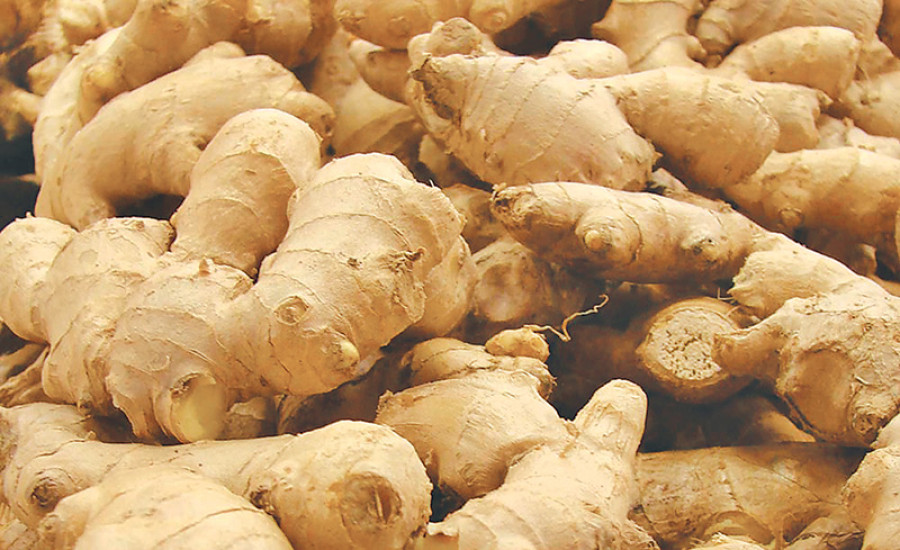Money
Ginger farmers in peril, fail to diversify exports
Inability to diversify ginger’s export market has left farmers in the eastern region at the mercy of India, where prices fluctuate rampantly.
Pradeep Myangbo
Inability to diversify ginger’s export market has left farmers in the eastern region at the mercy of India, where prices fluctuate rampantly.
Around four years ago, Shyam Rai, a local farmer of Dharan, was selling ginger at Rs190 per kg to Indian traders.
That price dropped to Rs5 per kg two weeks ago. Now, ginger is being sold for Rs28 to Rs32 per kg. But the latest price is still way lower than that of four years ago.
Hike in price of ginger has relieved farmers for now. But they are worried as this joy could be short-lived because prices of the spice have never remained stable.
“Price fluctuation in the range of Rs5 to Rs10 per kg is normal,” said Rai. “But here prices fall by as much as Rs200 per kg. And as we wait for the prices to correct, our products rot.”
Ginger is grown on more than 23,826 hectares across the country. Nepal produced 242,546 tonnes of ginger in the last fiscal year, making Nepal the world’s third largest producer of the spice after China and India.
Nepal exports almost 60 percent of the ginger produced here, according to the Ministry of Agricultural Development. India is the major market for Nepali ginger. Almost 94 percent of the shipments to India consist of fresh ginger and the rest are processed ginger.
“Since we rely too much on the Indian market, we cannot do anything but sell our product at prices offered by Indian traders,” said Rai. Farmers like Rai from Dhankuta’s Mahabharat range and surrounding areas grow around 30 to 40 tonnes of ginger per year.
They are exported to India via the Dharan Agricultural Produce Market.
“As we export all of the ginger grown here to India, we do not even get a slight hint of prices in advance,” Binod Rai, a ginger trader, said. “So, farmers are taking a huge risk by growing the spice.”
According to Binod, ginger collected at the Dharan Agricultural Produce Market is first ferried to Nepal-India border point at Kakadvitta. The produce is then loaded in another truck at Panitanki before it is transported to the Indian capital of New Delhi.
“Our transportation cost would reduce by around Rs10,000 if we are allowed to export our products via Customs Office at Biratnagar. But currently we are using the Kakadvitta border point to transport our products to India,” said Binod.
“We don’t know why we are not allowed to export ginger via the customs office at Biratnagar.”
Few years ago, Indian traders used to bring their own trucks to buy ginger here. This used to save farmers’ cost. “But that is not the case now,” said Binod.
The Dharan Agricultural Produce Market exported 6,821 tonnes of ginger to India in the last fiscal year, according to Laxman Bhattarai, manager of the market.
“Even though India had banned imports of ginger last year due to greater flow of Chinese ginger, it has lately been importing 20 tonnes of ginger per day,” said Bhattarai. This is expected to raise exports of ginger from the market to around 10,000 tonnes this fiscal year.
“So, despite falling prices, farmers are hopeful about finding a market for their produce,” said Bhattarai, adding, “To address the problem faced by farmers, Nepal must diversify ginger export market, as total dependence on the Indian market is raising risks for those engaged in production of the spice.”




 7.12°C Kathmandu
7.12°C Kathmandu













%20(1).jpg&w=300&height=200)
